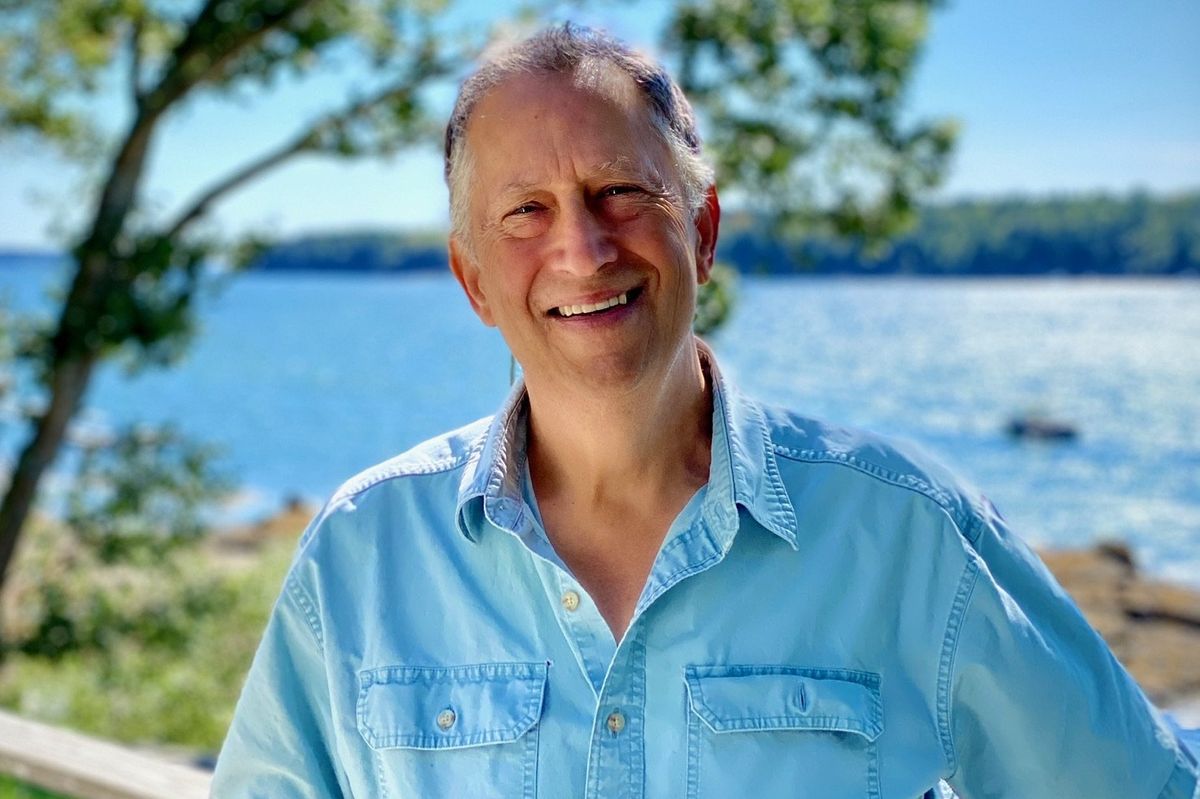HealthyWomen’s annual event is taking place in Washington, D.C., on March 30, 2023.
Every year, HealthyWomen hosts an event to bring together experts and trendsetters making a difference in women’s health. This year’s event — The Art of Living Well — will highlight creativity in healthcare, innovation and research.
The event will also feature headlining speakers, videos, a panel discussion and a silent art auction to raise money to support HealthyWomen’s mission of educating midlife women on important health topics. One of the lauded speakers at our event is Jeremy Nobel, M.D., MPH, the founder and president of The Foundation of Art & Healing.
“The foundation has a very simple mission, which is to explore and engage creative expression as a path to health and well-being for individuals and communities,” Nobel said. It does this by developing creative expression-based programs and making them available to a wide variety of community-based organizations, which bring the programs to the people they serve.
Connecting art and health
When Nobel was in medical school and early in his career, he experienced many challenges and a fair amount of stress — something we can all relate to.
“I found that creative expression is a really important way for me to better understand my own thoughts and feelings around all that,” he said. Nobel was drawn to poetry and photography as ways to express himself and improve how he was feeling.
Today, Nobel describes himself as a physician who’s also a public health practitioner. In addition to running the foundation, he is faculty at Harvard Medical School and the Harvard T.H. Chan School of Public Health, where he teaches a popular course on loneliness. Where he really connects art and health, though, is through his foundation.
According to Nobel, when you’re a lifelong teacher, you also become a lifelong learner. In fact, what he learned from a children’s art exhibit about 9/11 is what led him to establish his foundation.
During 9/11 and its aftermath, many people experienced trauma — especially with the seemingly nonstop TV coverage, and the children living in the five boroughs of New York were especially affected. Nobel said, “Many were experiencing an acute trauma response with difficulty concentrating in school, difficulty sleeping and emotional outbursts.”
When reading about support services being offered to these kids, Nobel was most intrigued by art therapy where they were asked to draw what was on their minds.
The Museum of the City of New York held an art exhibit of some of the drawings the children created. Seeing those pieces was Nobel’s lightbulb moment. “I found the images incredibly compelling because the art the children made came right from their unconscious. It’s not polished. It’s not intellectualized. I found it quite moving,” he said. Then, Nobel began reading about how art was effective across race and class. Children and adults from all socioeconomic and racial backgrounds were healing through art.
Wanting to bring access to healing to more communities, he created the foundation. Nobel explained the process: “A community center that serves a low-income population or a community of color has a trusting relationship with that community, so that people will engage with the program in a way that they may not with a national organization.”
Today, the foundation offers a number of programs — all evidence-based — to help people heal through art. The foundation creates the programs, and then leaders implement them within their communities.
Participants may have a number of health issues, including mental (such as anxiety, depression, PTSD), physical (heart disease, diabetes, cancer) or social (loneliness, isolation, race-based health inequities). Engaging in the foundation’s programs enables people experiencing everything from loneliness to illness to trauma to live better lives by helping them connect to other people, process their emotions and reduce their stress.
“We’ve made enormous progress, particularly around the work of the arts for loneliness,” said Nobel. “I think the time has come for people to look at creative arts as a way to really engage and connect — especially in challenged populations. It’s very powerful.”
Nobel’s passion for curing loneliness aligns with HealthyWomen’s vision of ensuring that no woman feels alone in her health journey.
“There’s a great receptivity by women to the power of the arts. Women not only find what we do emotionally appealing, but they understand there’s deep science behind how arts and creative expression can literally rewire your brain in a way that leads to healthier stress levels,” Nobel said.
The work done by HealthyWomen, Nobel believes, is crucial. “Knowledge is power. By making reliable, understandable knowledge available to women, HealthyWomen is empowering those women,” he says. “The other thing that comes through very strongly is the message that you’re not alone in all of your attempts and needs to navigate health challenges, both on behalf of you as a woman, and also the people in your life — anything you’re confronting, you’re not alone in confronting it. Particularly in a society where many people feel increasingly marginalized, that’s delivering something of great value to the community that HealthyWomen serves.”
Read about The Art of Living Well’s other headlining speaker, Terri Cornelison, M.D., Ph.D., chief medical officer and director, Health of Women, at FDA Center for Devices and Radiological Health.

